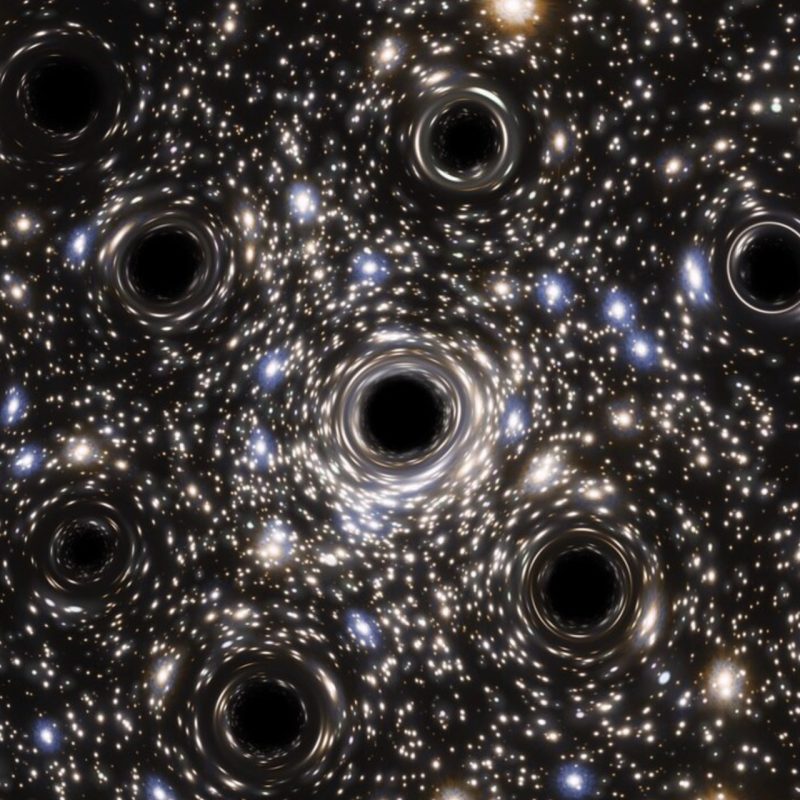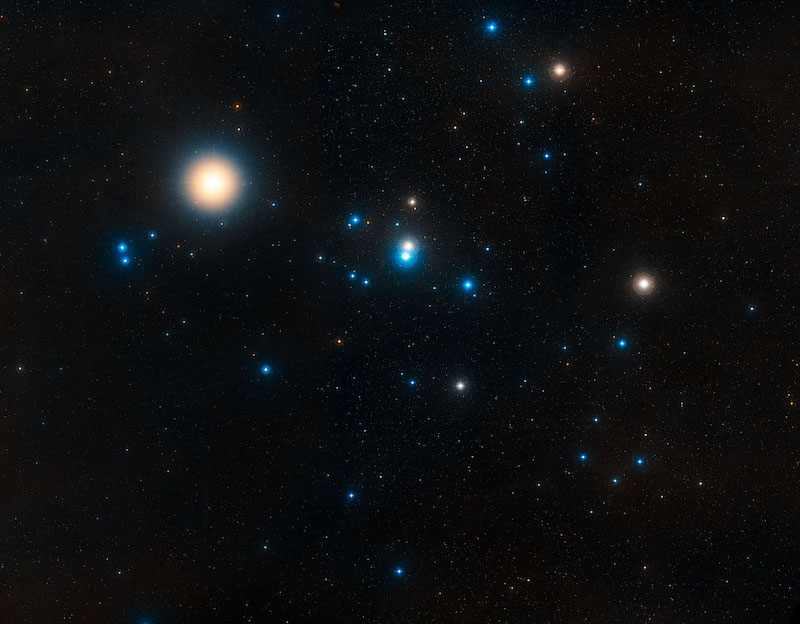
The Hyades star cluster is the closest open star cluster to our solar system, at 150 light-years away. Open star clusters are like families of stars, born around the same time and still loosely bound by gravity. But open star clusters can contain more than just stars. And this month (September 8, 2023), researchers in Europe said they’ve found evidence that the Hyades star cluster might be hiding some black holes. If so, they would be the closest known black holes to Earth.
The researchers, led by Stefano Torniamenti from the University of Padua in Italy, first published the peer-reviewed peer in Monthly Notices of the Royal Astronomical Society on June 29, 2023.
It’s also now in the September issue of the journal (volume 524, issue 2).
And by the way, the Pleiades – or 7 Sisters – is another famous open star cluster. It’s about 450 light-years away. Does it have black holes, too?
Tracking stars in the Hyades
The astronomers found the possible black holes in part by using computer simulations to track both the motion and evolution of all the stars in the Hyades. Then, they compared the simulations to the actual motions of the stars. The European Space Agency’s (ESA’s) Gaia satellite made those observations, which are considered to be extremely accurate.
Interestingly, the researchers said that the newest data is likely the most accurate if there are two or three black holes present among the stars. Torniamenti said:
Our simulations can only simultaneously match the mass and size of the Hyades if some black holes are present at the center of the cluster today (or until recently).
The findings aren’t quite conclusive yet, however. The best match of the new observations to previous data is with two or three small black holes being present. But it is still possible that there aren’t any black holes at all. A scenario where all black holes had been ejected from the star cluster still provides a fairly good match; not as good a match, though, as the one with the black holes.
Closest known black holes to Earth
If they can be confirmed, these will be the closest known black holes to Earth, at 150 light-years away. Currently, the closest known confirmed black hole is Gaia BH1, which is just over 1,500 light-years away. Moreover, there are millions of black holes in our Milky Way galaxy alone, so there could easily still be others even closer that astronomers haven’t found yet.
Most black holes, including these possible new ones, are what scientists call stellar black holes. They typically range from about five to several tens of times the mass of our sun. And there are a lot of them. Indeed, astronomers estimate that there are as many as 10 million to one billion such black holes in the Milky Way. Supermassive black holes, on the other hand, are millions, if not billions, of times more massive than the sun. Astronomers say they exist in the centers of almost all large galaxies, including our own.

Black holes, star clusters and gravitational waves
In addition, the observations of Gaia and subsequent studies have made it easier for astronomers to study open star clusters themselves in more detail. As astrophysicist Mark Gieles said:
This observation helps us understand how the presence of black holes affects the evolution of star clusters and how star clusters in turn contribute to gravitational wave sources. These results also give us insight into how these mysterious objects are distributed across the galaxy.
How to see the Hyades star cluster
The Hyades star cluster is very easy to spot in the night sky, because it is compact and distinctly shaped like shaped like the letter V. The bright star Aldebaran is part of the V. The V shape represents the Face of the Bull in the constellation Taurus. Aldebaran, meanwhile, represents the Bull’s fiery red eye. So next time you are looking at the Hyades, remember that you might be looking at some black holes, too, even though you can’t see them!
Bottom line: Researchers in Europe say that they may have found the closest known black holes to Earth, in the Hyades open star cluster 150 light-years away.
Source: Stellar-mass black holes in the Hyades star cluster?











